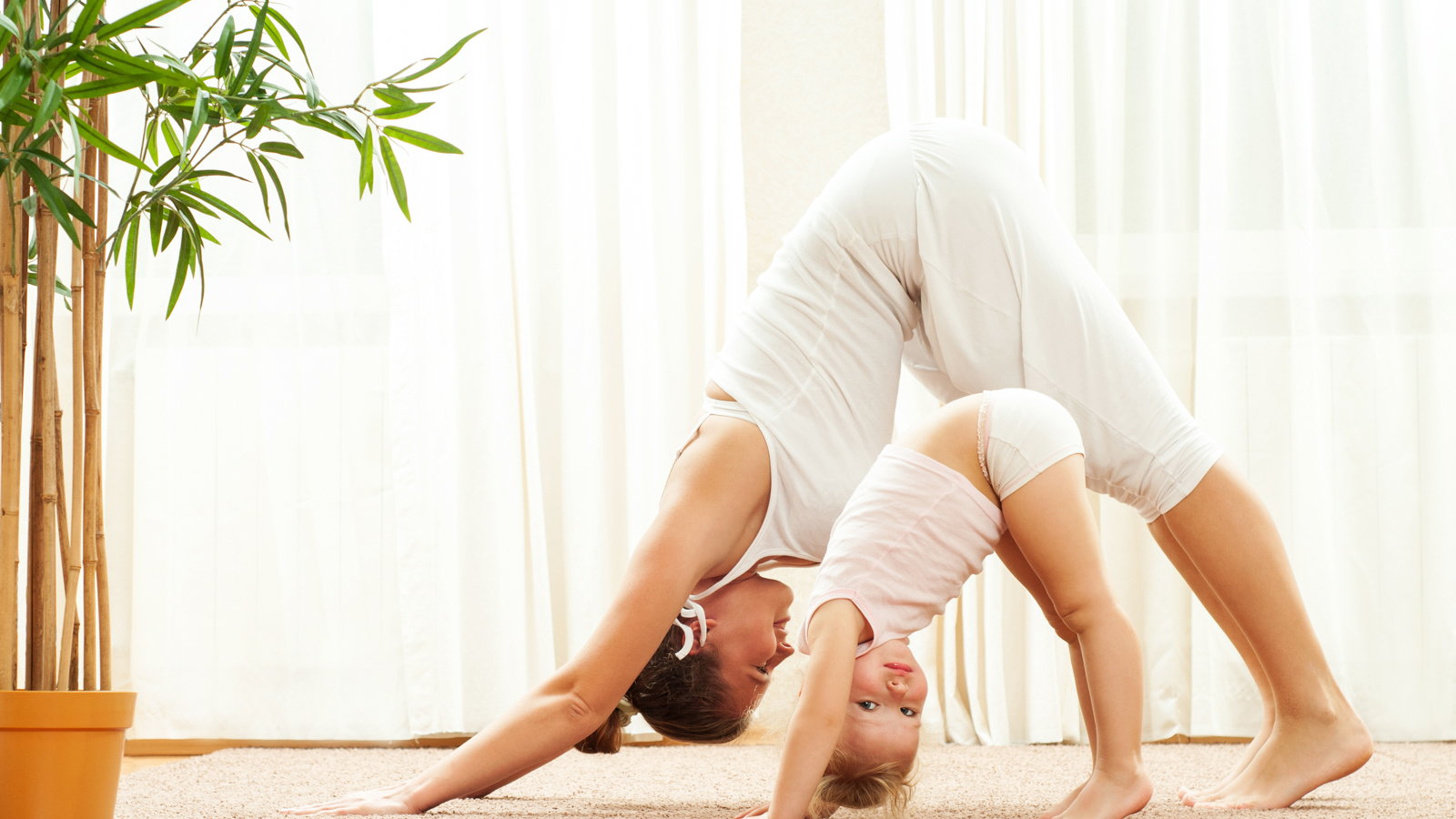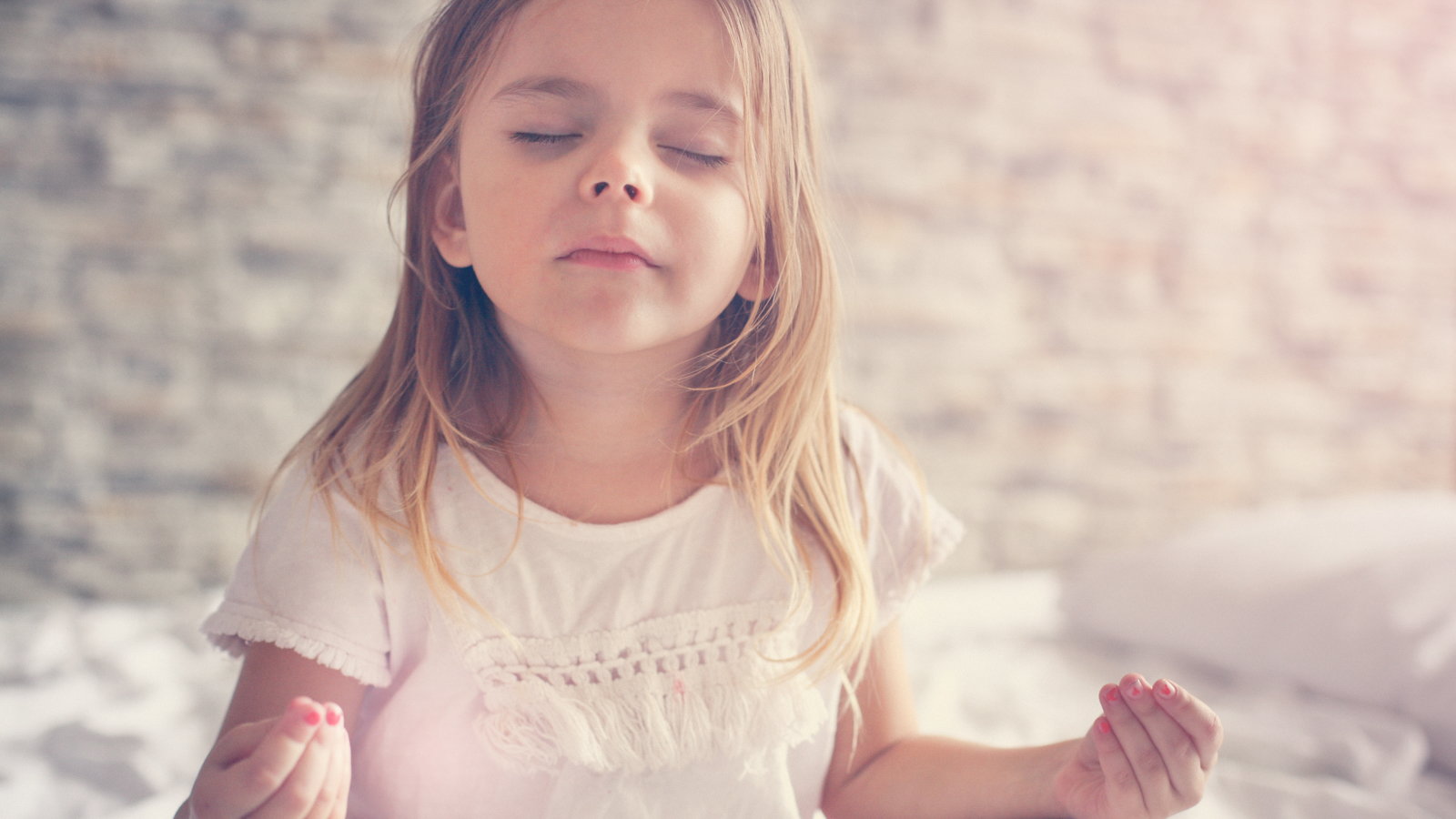
Your child may not talk to you about stress. That's because children usually don't know what stress is or how to verbalize when they are experiencing it. You may not be aware of the stress your child is feeling, but your child may manifest it in ways that you can see. You may notice behavior problems, your child being more moody or irritable, crying easily, or having problems sleeping. There are some ways you can help your child reduce stress and learn to relax. By taking traditional relaxation techniques and presenting them in a kid-like manner, you can teach your child coping skills to deal with stress.
Deep Breathing
Deep breathing, also known as belly breathing, involves taking slow deep breaths. Because you are taking in full breaths of air, your body's oxygen exchange is improved. This not only helps you relax, but also slows down your heart rate and lowers your blood pressure. Deep breathing is easy, and most children have no problem following instructions on how to do it. Have your child sit comfortably in a chair or lie on the floor. Have them place their hands on their belly. Then ask them to take a deep breath in through their nose. While they breathe, ask them if they can feel their belly go up. Count to three as they breathe in. Then tell them to breathe out slowly through their mouth and ask them if they can feel their belly go down. Repeat this several times until your child feels relaxed.

Progressive Muscle Relaxation
Progressive muscle relaxation is a technique where you tense specific muscle groups and then relax them, progressing through each muscle group until every group has been tensed and relaxed. Using this technique with your child will help him to feel more relaxed.
To do progressive muscle relaxation with your child, have him lie down on the floor comfortably. Then start with the top of the body and work your way down all the way to his toes.
Talk him through this by saying scrunch up your forehead. Have him hold this scrunched up position for five seconds and then tell him to relax.
Next, close your eyes as tight as you can. Hold each position for five seconds. And relax.
Clench your jaw tight and scrunch up your lips. Hold it... and relax.
Shrug your shoulders and relax.
Cross your arms across your chest as tight as you can. And relax.
Squeeze your hands into a fist as tight as you can. And relax.
Arch your back as high as you can and hold it. Then relax.
Squeeze your tummy muscles as tight as you can. Hold it and relax.
Press your legs as hard as you can against the floor. And relax.
Bend your ankles and try to point your toes towards your face. Hold it and relax.
Scrunch your toes up tight. Hold it. And relax.
Once you have finished, ask your child if he feels relaxed. If he says no, try it again.
Guided Imagery
A good time to try guided imagery is when your child is ready for bed. To do guided imagery with your child, you can purchase a book or use your imagination. The point of guided imagery is to encourage your child to use his imagination and relax. Here's an example, ask your child to think about being up in the sky floating on a cloud. Then tell him to close his eyes and think about how soft the cloud is. Ask him questions like, "Do you feel your body sinking into the soft fluffy cloud?" Describe the cloud and how it feels. Tell him to feel his head gently resting on the feathery soft cloud and his legs floating in the air. End with the feet or toes. Ask him to feel his toes softly brushing against the cloud.
Telling your child a gentle relaxing story while focusing on relaxing different parts of his body will help him to relax and sleep better.

Listening to Peaceful Music
An easy way to help your child to relax that doesn't require any technique or method is listening to gentle music. Classical music can be a good choice for this or listening to nature sounds. Lie on the floor with your child and play some relaxing music. If your child has done deep breathing or progressive muscle relaxation, you can do this while the music plays. Just taking time to listen to gentle music will help your child to relax.
Mantras
Mantras are a form of meditation where you chant a word or sound over and over to achieve relaxation. You have probably heard of the Hindu mantra "om" being chanted repeatedly. Instead of using sounds to chant, try chanting relaxing words or affirmations, like "I feel relaxed" or "I am loved."
Other Ideas
All of these methods are easy to do with kids and will teach them coping skills for dealing with stress. If you are looking for more ideas, try visiting Youtube. They have some great relaxation videos for kids. Lori Lite also has an amazing series of children's books that take relaxation methods like deep breathing and progressive muscle relaxation and put them into story form for kids.
